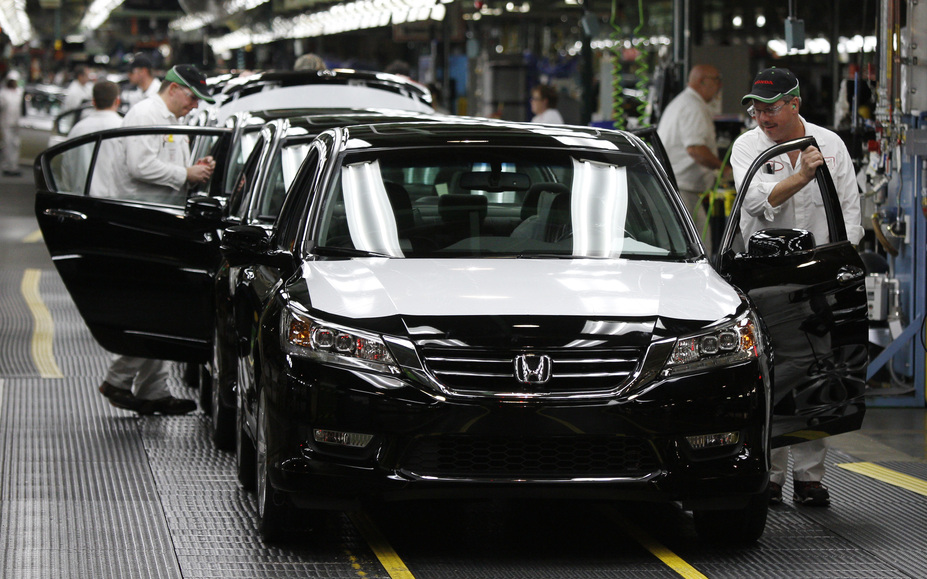Many industries struggle to attract younger generations of workers, with comments like the following becoming increasingly common in conversations with employers.
“We aren’t an ‘IT’ company, but we are hiring 50 software developers.”
“People still think careers in our industry are dark, dirty, and dangerous.”
“Our employees [use the latest technologies / learn to code / fly drones / build models in virtual reality / program robots]. Why aren’t kids interested?”
So, why is it so difficult to find young people who are interested in careers in your industry?
Seeing is believing.
Young people may not realize certain jobs in any given industry exist, let alone feel inspired by them. Children learn by absorbing information from the world around them, but few regularly visit workplaces to observe and learn. Exposure may be limited to what these young people hear from the adults in their lives. Let’s take manufacturing as an example.
Manufacturing: Then and Now
Many decades ago, manufacturing plants were crowded places where people moved heavy objects and completed repetitive manual tasks, putting them at risk for injury. While the first “robot” by modern industry standards was launched in the 1930s, the robotic arm was not introduced until the late 1970s, revolutionizing the way companies manufacture products.

https://www.assemblymag.com/blogs/14-assembly-blog/post/91070-what-is-the-oldest-assembly-plant-in-the-world
By comparison, here’s what a modern manufacturing facility looks like today.

https://fortune.com/2021/08/02/toyota-cars-chip-shortage-semiconductors/
For many Americans, the word ‘manufacturing’ conjures up ideas or images from earlier eras, despite how much has changed since then. When a child first wonders how cars are made, they may ask a teacher or family member what it would be like to make a car. Unless the person they ask has worked in or around modern manufacturing, their memory may conjure up outdated images. Thus, the awareness and stigma issues continue.
Inspiring the next generation about careers benefits all members of a community. Business leaders have the unique opportunity to open their company’s doors to students, literally and metaphorically, to create career exposure opportunities for students.
Getting Started
Offering career exposure opportunities to inspire young people can be as simple or involved as your company can manage. Here are five ways your company can get engaged today:
- Participate in an existing event (see examples below)
- Host a company tour or open house for students/parents/educators
- Offer internships or job shadowing days to local students
- Contact your local middle or high school and offer to be a guest speaker
- Engage in planning and curriculum through your local school’s business advisory council
Examples of Career Exposure Opportunities
Manufacturing
- National: MFG Day helps show the reality of modern manufacturing careers by engaging thousands of companies and educational institutions around the nation to open their doors to students, parents, teachers, and community leaders.
- Ohio: Making Ohio provides tools, from marketing assets like t-shirts and social media posts to career pathways, all with the goal of changing perceptions and opening minds to the opportunities available in today’s manufacturing companies.
Tech and Innovation
- Ohio: Ohio Tech Day is a statewide celebration designed to launch engagement between industry and education to inspire high school students about careers in tech and innovation throughout the year.
- Arizona: AZ Cyber Initiative creates opportunities, such as events, programs, and scholarships, for high school students who are interested in pursuing a career in cybersecurity to join the fight against one of the nation’s largest national security issues.
Agriculture and BioTech
- National: EducationProjects.org was founded by two veteran teachers after a conversation with an agriculture industry executive who wanted consumers to understand more about their business. EducationProjects.org starts with the needs of industry and moves into the classroom, driving industry workforce development while supporting teachers as they guide students’ growth and career awareness. Industry relies on their team of educators to write curriculum and manage education programs connecting the workplace to the classroom.
Insurance
- Ohio: Insuring Ohio Futures is a public-private partnership launched to collectively address industry workforce needs, including adding new college degree programs to help people earn the credentials required for a promising career in insurance.
Construction
- National: I Build America is a national movement focused on building pride in the construction industry, educating the public about the value of construction, and recruiting the next generation of construction professionals.
Inspiring the next generation starts with connections between industry and education. Reach out to us at info@workmorphis.com for help getting started.
About Workmorphis
Workmorphis provides a full suite of services to help organizations across the U.S. revitalize their workforce, including education and labor market alignment, workforce planning strategies, engaging community partnerships, and more.
Meet the Author
Emily Fabiano is the founder of Workmorphis, a cross-sector workforce consultancy helping organizations build a more resilient workforce to thrive in a changing economy. Fabiano has deep experience in workforce transformation at the government level, working at the cross section of workforce strategy, economic development, and public policy. With a keen understanding of the unique challenges facing today’s and tomorrow’s workforce and the ability to communicate across sectors, Fabiano brings a new level of understanding and collaboration required to connect industry and education and prepare people for jobs.


